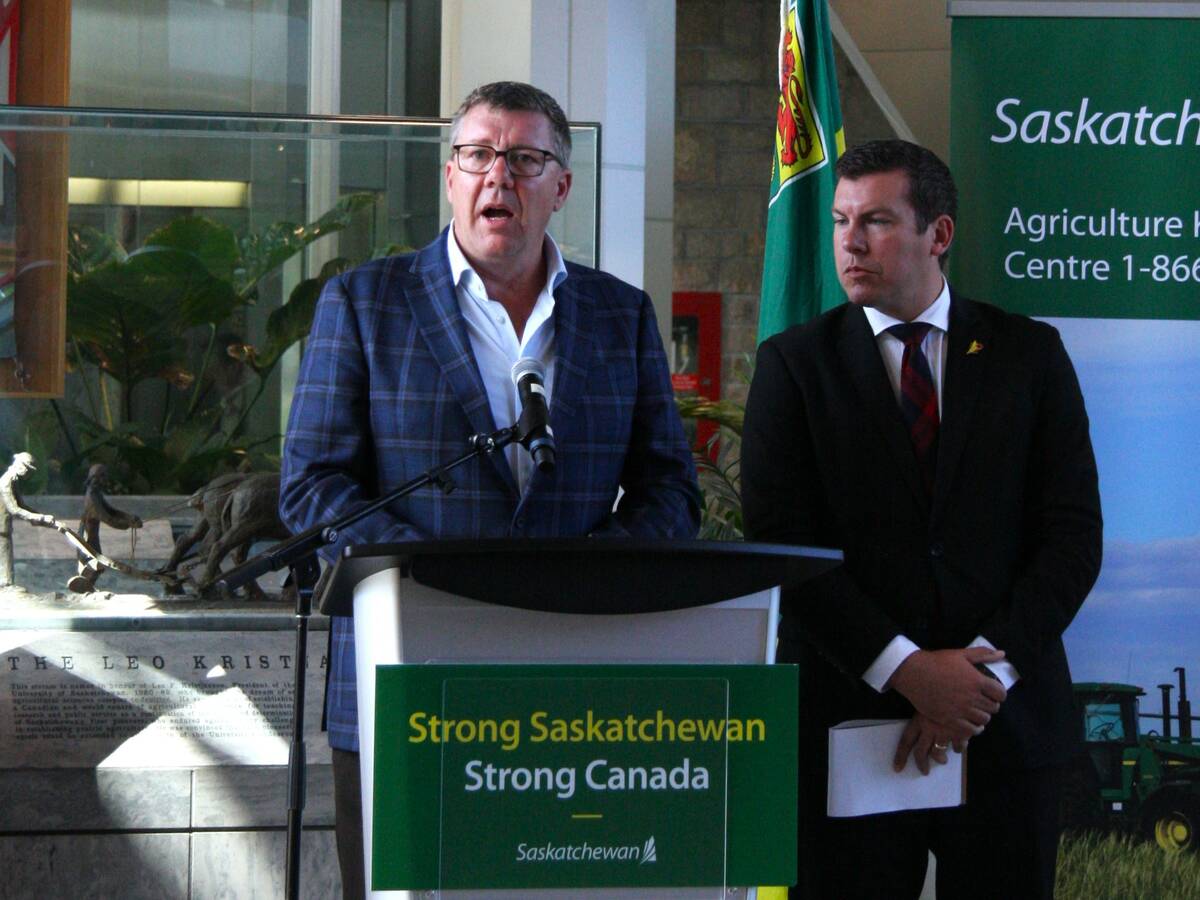People who work in massive hog barns could be endangering their health, say some members of the National Farmers Union, but an agricultural medicine specialist says the fears are unfounded.
Kelvington-area farmer Pat Godhe of the NFU also has questions about the quality of meat produced by large-scale hog operations.
“The product coming out of these barns is questionable and the health of the workers is questionable,” said Godhe in a Feb 8. interview.
“There are other ways of raising hogs in this province.”
Read Also

Key actions identified to address canola tariffs
Federal and Saskatchewan governments discuss next steps with industry on Chinese tariffs
The NFU has been pushing the Saskatchewan government to bring in laws to protect smaller family hog barns from being squeezed out by large corporate hog operations.
But some pork experts say workers might be better off in bigger barns.
Bill Henley, an engineer with Saskatchewan Agriculture, said there’s a better chance larger corporate operations can afford good ventilation systems.
“Size does not have a lot to do with air quality,” Henley said.
Ambikaipakan Senthilselvan, with the Centre for Agriculture Medicine at the University of Saskatchewan, said the issue is not the size of the barn but how much time a worker spends there.
“The disadvantage is that people may be working in the same area for longer periods of time,” he said. Workers are advised to wear masks to block exposure to dust, he said, but that doesn’t always happen.
“The more sophisticated masks are big and hot, not convenient to wear for a long period of time, maybe a half hour.”
Opinions also differ on the NFU’s theory that larger hog barns will produce lower quality meat.
John Patience, president of the Prairie Swine Centre in Saskatoon, said the size of a hog operation has nothing to do with the quality of meat produced there.
“I’m not sure where they’re coming from,” Patience said. The quality of meat, which is all federally inspected, is determined by factors such as genetics, the feeding program and health of the animals, he said.
“I don’t see at all how the size of the unit could influence meat quality.”
Godhe and Cut Knife, Sask. resident Marcella Pederson, also an NFU member, fired questions at Saskatchewan premier Roy Romanow when he spoke about the province’s dedication to health and the wellness model at the National Health Care Coalition forum in Saskatoon Feb. 8.
“The problem basically is that if you want wellness and good health you have to eat good food,” Pederson told the crowd. She said the provincial government’s agriculture policies emphasize economics rather than health.
“Your current economic policies encourage illness. An example is these large-scale hog barns coming in instead of free range hogs that produce good meat,” Pederson said. “Good food means good health.”
Romanow dismissed the charges, and repeated the government’s intention to increase production from 1.2 to three million hogs.
In a later interview, he said the province can support both large-scale and smaller family-run hog operations in an environmentally safe and profitable manner.
















